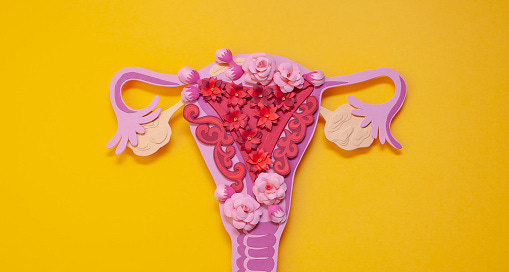On April 21, 2020, I had a scheduled appointment with my gynecologist. Had it not been for COVID this would have been a normal, in-person annual exam. You know the one. You undress completely, except for the face mask, and change into a flimsy cotton print gown with the ties in the front. Or, do they tie in the back? I always get it wrong. You drape a too-small starched and pressed sheet over your legs, place your head on a paper-covered pillow, and scooch your tush down to the edge of the exam table, legs spread, with your feet in cold metal stirrups. The typical prep for a vaginal exam, PAP smear, and breast checkup. But in 2020 that didn’t happen. My appointment was on Zoom. A face-to-face conversation about any health issues and concerns. And I didn’t have any. I felt healthy and strong, didn’t feel any lumps or soreness in my breasts, my menopause symptoms were waning and mostly under control, so I got a pass. All was good, or so I thought.
By March of 2021 things had changed. What was this? What was I feeling? When I wiped after a pee, there was a bump, an inexplicable lump. I felt a bulge at the opening of my vagina. I was used to things going up my vagina, not coming down. So, I googled, “What is this bulge at the opening of my vagina?” Then, on sites from the Cleveland Clinic and the Mayo Clinic, I read about prolapse. Vaginal Prolapse. “The descent of the pelvic organ out of its normal anatomical position due to lack of support.”
I was sagging. I was sagging in a way I could not see. I couldn’t even feel it … well … until I did. I felt the bulge. I read that prolapse “occurs over a period of time caused by damage to the supporting muscles of the pelvic floor during childbirth.”
I made an appointment. I had an internal exam. And my gynecologist told me I had Pelvic Floor Prolapse. In fact, I had Stage II Pelvic Floor Prolapse.
I thought this condition needed an acronym--like PFP. But when I looked up PFP I found it is most frequently used in social media to mean Picture for Proof—as in—Here’s my new puppy Rufus #PFP. Well, I decided I’m not about to offer Picture for Proof for this particular condition.
In the world of professionals, PFP is Personal Financial Planner or Personal Fitness Professional or Pastors for Peace. And, beyond that, Pitcher’s Fielding Practice gets to use PFP, and so does the fictitious group Pistols for Pandas. Maybe I could, for the sake of this project, use the acronym PFPGD, as in, Pelvic Floor Prolapse Goddammit.
Why had I never heard about PFPGD before? I have lots of girlfriends. We talk openly—we complain, we share, we kvetch. Perimenopause and menopause created quite the buzz, but pelvic floor prolapse (PFPGD)? It seemed I was bringing something new to the conversation. My friends wanted to know more. One close friend said, “How did you know?” “Well, let’s see,” I said, “My cervix is sagging out of my vagina, I can feel it like an egg between my legs.” Needless to say, her eyes grew wide as she raised her eyebrows.
Six long weeks later I got in to see a gynecological surgeon. After a vaginal exam and a rectal exam, and hundreds of questions, he told me my uterus was collapsed and essentially sitting on top of my bladder. All those nice ligaments that held everything in place, like cords supporting a hammock between trees, were stretched out. He drew me pictures. All those innards were sagging. Pressing down, sitting on top of my bladder. Fortunately, in my case, it wasn’t pressing on my rectum. “So, this is why I am peeing so often?” I asked. The surgeon shook his head yes. I was confused but it explained a lot. And he called it Pelvic Organ Prolapse. And sure enough, when I googled Pelvic Organ Prolapse there was the acronym POP. And the journey begins!





I love that you are writing about this. And it’s not just an ageing issue, but women’s health in general. I’m a couple weeks away from 35 and 8 months postpartum with my second boy. Days when I’ve done a lot of carrying a chubby baby or holding and dancing with my 2-year-old, it feels like there’s a tampon partially inserted in my vagina. My pelvic floor is not in great shape for multiple reasons. Pelvic floor physical therapy should be standard if care for all people who carry and birth babies. I’m hoping to work on my issues now so I don’t end up with a full-on prolapse. Again, I’m so happy you’re writing this. Our society doesn’t care about women’s health so we have to make ourselves heard.
Thank you for writing about your experience with this, Diane. It's absolutely wild to me how stigmatized women's healthcare is. While it's a little disappointing that we have to share our personal traumas to get people to pay attention, I so appreciate hearing other women's stories and experiences.